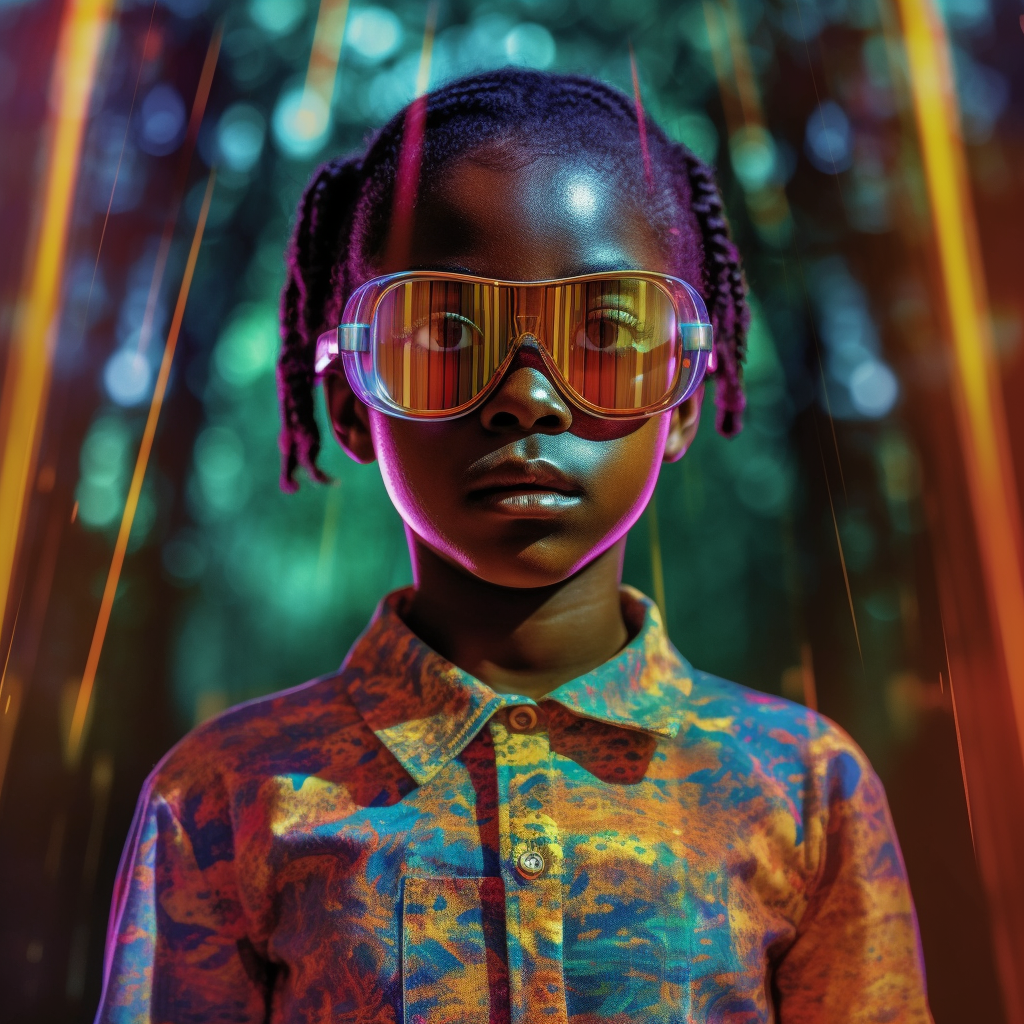I wanted to offer a few words about the special focus on Artificial Intelligence I intend for this section of ETEC522.
There’s a huge AI buzz on. Deservedly so, IMHO. I’m old enough to remember what the world was like before social media, before mobile phones, before computers and before TV. AI is barely nascent but I expect it will transform humanity more than any of those technologies, probably more than all of them together, and more than any technology ever invented. It will be unprecedented, rapid, relentless and absolutely worthy of our critical attention.
As with previous waves of technology, it’s impossible to predict what AI-driven social, cultural and personal transformations will be. Don’t listen to anyone, or any AI, who claims otherwise. So we’re all in the same boat and, as professional educators, we hold the massive change to the future of learning in our hands.
There’s no cause for panic. Every technology ever invented has had dangerous potentials; our collective responsibility is to mitigate such potentials while exploring prospective benefits. AI is simply a new kind of tool – a tool that can ‘collaborate’. One exciting prospective benefit is how much it might accelerate human creativity. A concern is how much it might restructure the job market (for the first time a tool is emerging that will likely challenge more “white collar” jobs than “blue collar” ones).

From an ETEC522 perspective the rationale for a special focus is that AI will disrupt every existing industry and accelerate every emerging market. The opportunity horizon is sparkling with AI possibility. As our teams explore emerging markets I will ask them to look critically at the AI dimensions of those markets. And whatever topic you select for Assignments #1 and #3, an AI focus there will be expected as well.

Meanwhile, MET is developing a new course focused on AI in Education. Also, I am supervising one of your peers in an ETEC580 Guided Research Project on the impacts of AI on ESL, so any of you wishing to dive deeper into some aspect of AI could also consider an ETEC580 focus.
Finally, UBC has largely shifted responsibility for policies and policing of the use of Artificial Intelligence tools to individual instructors, so here is my policy:
You are highly encouraged to make use of artificial intelligence tools to complete any course work, with the requirement that such use is always clearly and correctly indicated, and that you provide a professional description and assessment of each implementation for the benefit of your instructor and peers. Failute to indicate and describe AI-generated material will be reported as academic misconduct. Please consult your instructor if you have any questions about the use of AI tools.
Thoughts and questions welcome.
David
Dr. Vogt, which AI image generator did you use for these images (if that’s how to got them)? I’ve tried a few but have found that many are pay-to-play and I run out of free credits before really digging in. I’d also be curious about the prompts you used to generate them.
Nick – These images were created with Midjourney. And yes, there are limited free credits so I subscribe, mostly to get a feeling for how quickly the technology is evolving, and how people are using it. Having subscribed for about 10 months now, I can honestly say I’m astounded at how quickly it is getting better. Even more eye-opening, perhaps, is observing the streams of images created by average users everywhere – it is a humblingly candid open window into the collective human psyche.
I haven’t used any of the other image generators, but many of the other AI tools, with the same sense of wonder at the rapidity of evolution.
I may very well sign up for a subscription in order to explore it further.
I used MidJourney to create my avatar and I’ve been experimenting with it for the past three months. I really like the community as I have found them to be helpful and supportive when asking very specific and nitpicky questions!
Very cool! I think I’ll have to go ahead and try out the basic plan. Yes, from my quick glance the Discord server for Midjourney seems pretty awesome.
Hello Dr. Vogt – I played around with Midjourney last month and I found it fascinating and frankly, groundbreaking for my teachable subject. As a French teacher in the IB (International Baccalaureate) program, there are specific guidelines for how we conduct spoken exams with our Diploma Programme students. What I struggle with, is finding images that our connected nicely to our units of study that allow students to connect to target cultures. An image of two people sitting outside of a restaurant would be good for a spoken exam, but “a couple having a coffee and a croissant outside a cafe in France next to a busy street during a sunny day” would be incredible… And that’s what Midjourney is able to do. BUT, the images were still a bit problematic since the “people” would have blurred or irregular faces. I’m wondering if you’ve seen any improvement to how the AI creates faces or if you’ve experienced these same glitches?
Hi Nick, you could also explore thing on Dall-E-2 powered by Open AI, https://labs.openai.com.
Dr. Vogt – I attended an EdTech conference recently with a focus on generative AI and LLMs specifically and I’m dumbfounded how quickly things are evolving. While the conference speakers also focused on ways to work with these (versus outright banning them) technologies, I’m afraid that as educators we are not fast enough to adapt (but maybe that’s ok?). It’s very exciting to be a learner and an educator during this time! Looking forward to an enriching dialogue about this topic.
This genie is out of the bottle – there’s no point in thinking about how to put it back. As well, it is easy and very safe to predict that the future success of your students today will depend on their expertise in working with these new tools, and riding the wave of their rapid evolution, skills that will almost certainly become a mission of every classroom. Educators have always had to wrestle with the possibilities, unknowns and demons of a changing world. What’s different here – exciting and scary – may be the pace and scale of change.
AI is the victim and villain of its creation. What is important to note that it is rather like a precocious early teenager where frontal lobe development is ongoing. The issues of quality management and control over content, objective and use are only now being considered. Does that mean that the developers of AI are challenged in the same way as the precocious teen with limited frontal lobe development ?
AI grew out of the well funded super computer researcher program who believed in the genuine concept of super intelligence. The fact also remains that what is fed into its structure is directly related to and controlled by its human parent, the super intelligent hero.
When the panic button about AI has been hit primarily due to lack of understanding of what has been gained, whether incidentally or otherwise, it is rather like looking at the H bomb which was developed for !!! remind me again ? and the awful consequences which followed through lack of cultural interactions globally and perceived threat.
The question remains, who is in charge ? As educators, do we apply the well researched quality assurance and guidelines which are hard won and exist for safety, development of learning through present and past events ie. history and maths as examples? Or have we forgotten how to think and reflect altogether?
AI when applied in a constructive context, can certainly and emphatically impact healthcare, education, therapy, research, development and social issues, specifically to decrease so many of the social challenges that exist at present, including disease, poverty and racial/cultural intolerance and ignorance.
Applied negatively, in the context of rapidity of expansion and social media, it can create destruction and chaos. If AI is presently being used for algorithms to suppress, falsify and deny while promoting inflation and financial challenge for the majority, then we must address it. it is not an entity on its own and remains our responsibility to monitor its application and safety.
We are the drivers of change and therefore we must take back ownership for safe and effective local and global development. PS. do you recall the movie Pixels ?
AI is a topic, a tool, a shaper of the classroom and the world at large, that is simply essential. As an educator, it was amazing how quickly AI took the world by storm and infiltrated the classroom. There is incredible opportunity, and a sense of risk that frightens many. What it brings to the field of education is forced change, a reality that I think can be a good thing. Teachers are forced to consider why they do what they do, what best practice is, how to assess more fairly and with validity, and how to incorporate AI into the process rather than seeking to shut it out. Resistance is futile, assimilation is key – but I believe we have an opportunity to establish order in the face of AI.